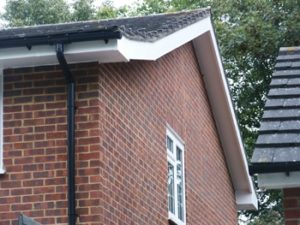fascia-and-soffit-contractor3773
fascia-and-soffit-contractor3773
Five Killer Quora Answers To Fascia And Soffit Upgrades

Fascia and Soffit Upgrades: Enhancing Your Home’s Exterior
Intro
When it comes to home improvement, lots of house owners focus on the more noticeable aspects like siding, windows, and doors. Nevertheless, similarly crucial however frequently neglected locations are the fascia and soffit. Updating these elements can significantly improve a home’s exterior visual appeals, improve performance, and supply much better defense versus the aspects. This short article will dive into the value of fascia and soffit, the various upgrade alternatives available, and how these enhancements can benefit your home.
Comprehending Fascia and Soffit
What is Fascia?
Fascia describes the horizontal board that runs along the roofing system’s edge. It is generally the visible trim utilized to link the roofline to the home’s exterior walls. The fascia board plays a vital role in supporting the lower edge of the roofing, attaching the rain gutters, and often adding an ending up touch to the architectural design of your house.
What is Soffit?
Soffit is the product that covers the underside of overhanging eaves. It fills the space in between the roofline and the exterior wall, providing total protection while boosting the general appearance of the eaves. Soffits are vital for ventilation, as they enable air to flow into the attic space, assisting to keep proper temperature balance and avoid wetness buildup.
Why Upgrade Fascia and Soffit?
Updating fascia and soffit elements can yield a host of benefits, including:
- Aesthetic Appeal: New fascia and soffit products can match the design of your home, elevating its curb appeal.
- Security from Moisture: Poorly maintained fascia and soffit can rot or end up being infested with bugs. Upgrading with moisture-resistant materials supplies much better protection.
- Improved Ventilation: Well-designed soffits enhance attic ventilation, which can lead to energy cost savings while minimizing the risk of ice dams in winter season.
- Increased Property Value: A visually attractive and well-kept exterior can improve your home’s market price.
- Lowered Maintenance: Modern products frequently have better durability and require less maintenance compared to conventional wood options.
Upgrade Options: Materials and Styles
When considering Fascia And Soffit Upgrades; https://helx-artifacts-git.apps.renci.org/,, property owners have various products and styles to pick from. Below is a table summarizing the most common options:
| Material | Description | Pros | Cons |
|---|---|---|---|
| Vinyl | Plastic material that mimics wood textures | Low maintenance, moisture-resistant | Can fade over time |
| Aluminum | Light-weight metal available in numerous colors | Resistant to corrosion, long-lasting | May dent quickly |
| Wood | Traditional alternative that offers natural charm | Simpler to deal with, aesthetically pleasing | Requires routine maintenance |
| Fiber Cement | Composite product that simulates wood | Extremely long lasting, weather-resistant | Much heavier, might require special tools |
| PVC | Lightweight plastic option | Easy installation, resistant to rot | May lack color range |
Installation Process
Upgrading fascia and soffit needs an in-depth approach to guarantee durability and appropriate function. Here’s a quick summary of the installation process:
-
Assessment: Evaluate the current condition of your fascia and soffit. Search for signs of rot, damage, or bugs.
-
Product Selection: Choose the suitable products based upon aesthetics, maintenance choices, and budget plan.
-
Preparation: Remove the old fascia and soffit products thoroughly. Ensure all locations are tidy and devoid of debris.
-
Installation:
- Install the new soffit panels, ensuring correct ventilation.
- Connect the fascia boards, securing them firmly and examining for any gaps where moisture could get in.
-
Completing Touches: Paint or seal the brand-new products as required and set up gutters, ensuring they are safely connected to the fascia.
Regularly Asked Questions (FAQs)
1. What is the ideal time for fascia and soffit upgrades?
The perfect time for these upgrades is normally during spring or early fall when climate condition are moderate. Preventing severe temperatures can help ensure the products set correctly and keep their shape.
2. How do I understand if my fascia and soffit requirement to be replaced?
Signs of damage consist of peeling paint, sagging boards, water damage, or visible spaces. If you can see rot or insect problems, it’s time to think about an upgrade.
3. Can I install fascia and soffit upgrades myself?
While some homeowners may feel confident in DIY setups, employing professionals is often recommended. They bring proficiency and ensure that the installation fulfills local building codes.
4. What should I try to find in a contractor?
When selecting a contractor, look for licenses and insurance coverage, ask for references, and read evaluations. It’s advantageous to get multiple quotes to guarantee you receive a reasonable cost.
5. Just how much does it usually cost to update fascia and soffit?
The expense can differ significantly based upon elements such as material option, labor costs, and the total size of your home. Usually, property owners might spend in between ₤ 1,500 and ₤ 5,000.
Updating fascia and soffit parts is a vital aspect of home maintenance that need to not be overlooked. Through enhanced visual appeals, improved protection, and increased residential or commercial property value, these upgrades serve an essential role in maintaining the stability and appeal of your home. By understanding your alternatives and the advantages they offer, house owners can make educated choices to enhance both the beauty and performance of their home.



